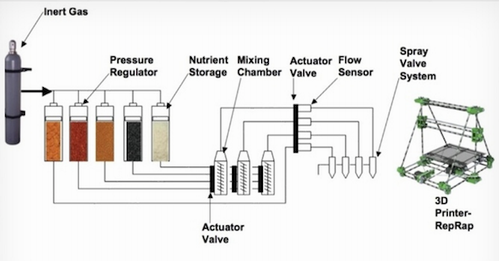
The food of the future comes from a can and tastes like algae and insects . . . at least according to Anjan Contractor, the engineering mastermind behind the 3D food printer that promises to revolutionize our dinner plates and solve world hunger. That sounds like a lot to expect from a few cans of powdered grasshopper, but NASA has invested $125,000 worth of solid faith into Contractor’s abilities so we’re betting he’s onto something.
Here’s the basics: the 3D food printer works by using canisters of powdered “food building blocks” (including protein powder made from insects) that are combined and then “cooked” within Contractor’s printer. The canisters can last for up to 30 years and would be used up completely and then replaced — thus eliminating food waste entirely. Further down the line, Contractor envisions the printer tailoring each meal for an individual person’s needs by, say, adding more protein for a bodybuilder and more calcium for someone with osteoporosis. That’s still pretty far in the future, though. Right now, Contractor is just focused on trying to print a pizza.





